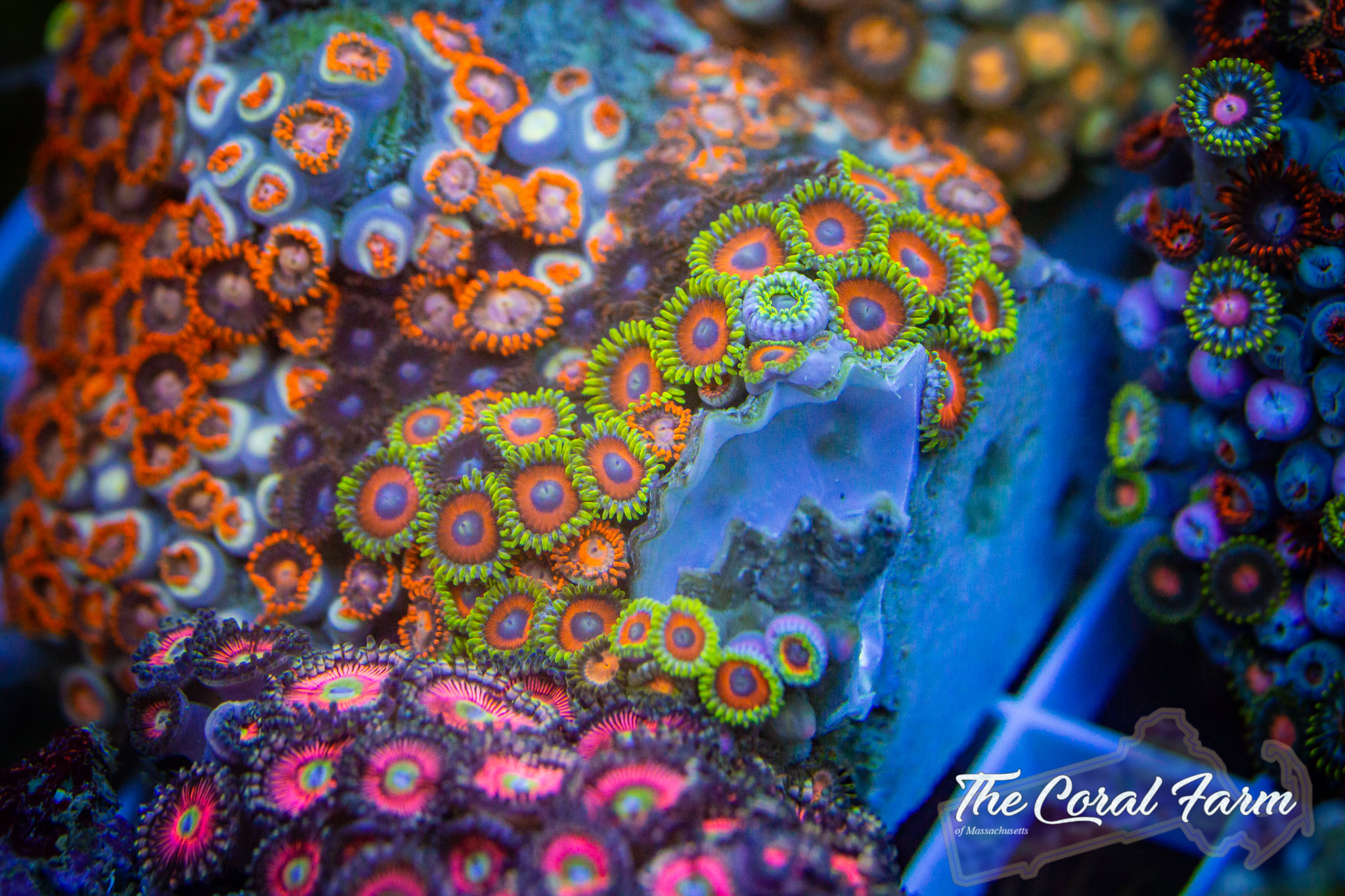
It is adapted to high light but may be sensitive to temperature stress. 2002), a wide spread host generalist symbiont that associates with many coral taxa.

sociatus) Primary symbiont is C1 (Lajeunesse et al.

Additionally, a different Symbiodinium C type is found in deep colonies around Japan. Also found in association with a clade A Symbiodinium but only in colonies that are under light and desiccation exposure at low tide. sansibaricus) Primary symbiont Symbiodinium C3ee-ff(AKA C1z Reimer 2008) high light adapted. This may be the most common type of Zoanthus in the aquarium trade.Ĭommon Variety Names: Eagle Eyes, Wham’n Watermelon, Radioactive Dragon Eyes and many, many more. 2004), often with pink ring around closed polyp but this is not always present so shouldn’t be used as diagnostic. Zoanthus sansibaricus (Indo-Pacific) Zoanthus sociatus (Caribbean)Īquarium ID: Look for interconnected polyps with oral disks 6-10mm in size Reimer et al. If you are provided with collection location you can determine the actual species name of the specimen.Įagle Eyes, a common color variety of Z. With the information below you should be able to identify the species pair that most of the Zoanthids you encounter in the hobby belong to. In cases where there are key differences between species because of the symbiont they associate with, information on their symbiotic associations is provided. The two ocean basins, however, offer very different Symbiodinium (Zoox) communities so the sibling species pairs differ in the species of Symbiodinium that they associate with. It is for this reason that I have lumped the sibling species pairs together in their descriptions below, because without collection location or genetic information you will not be able to tell them apart. Many of these species pairs appear identical because there hasn’t been a lot of evolutionary time since the split between the Caribbean and Pacific. You can think of them as identical twins in species terms. After removing the redundant names, many of the remaining named species of Zoanthus and Palythoa exist in sibling species pairs between the Pacific and Caribbean (Reimer et al 2012). In light of these findings, it is now possible to have a relevant discussion regarding the species identity of Zoanthids, focusing on the twelve most commonly encountered species in the hobby. These studies suggest that many of the previously described species are just redundant names for a few widely distributed species (Reimer et al. This species exhibits an extraordinary amount of variation in color morphology. 2004, 2006a, 2012), his answer to the aquarist might be “Not so many that you couldn’t know them all by name.”ĭeep-water Z. James Reimer, has been using DNA based techniques to ask the question “How many species of Zoanthids are there?” Having published several new studies (Reimer et al. Recently, however, a Zoanthid researcher, Dr. So it is perhaps no wonder Zoanthid keepers often do not bother with Latin names. Further, the described range for many of the species is quite small, requiring collection location to be known in most cases for species identification. These species are often described with detailed morphological measurements like thin-sectioning the polyp through the gastro-vascular cavity and counting the number of septa, an uncommon practice amongst aquarists. A quick look over the species of Zoanthids described in the scientific literature gives a list of more than 100 species (Fautin, 2003). The state of cnidarian taxonomy is indeed quite messy, and it is perhaps reasonable to argue that the state of Zoantharia (zoanthids) is a bit messier than Scleractinia (hard corals). Just as every show dog must come with papers from a respectable breeder, these names can vouch for a coral’s genealogy. They let you know what your dime sized frag will look like in 2 years and may even provide a link back to the original owner. These names serve as identifiers for particular individuals. So aquarists give (often humorous) names to corals with particularly nice color morphology. Members of the same species, however, can sometimes be quite different, especially in their coloration. Knowing a new specimens species assignment can tell you what kind of lighting it might need, how it might grow and if you need to worry about it killing it’s neighbor in three months. Members of the same species generally have the same husbandry requirements.

The identity of a coral offers critical information.

Whether it’s the scientific name or the variety name of a particular coral, reef aquarists want to be able to identify what they have in their tanks.


 0 kommentar(er)
0 kommentar(er)
